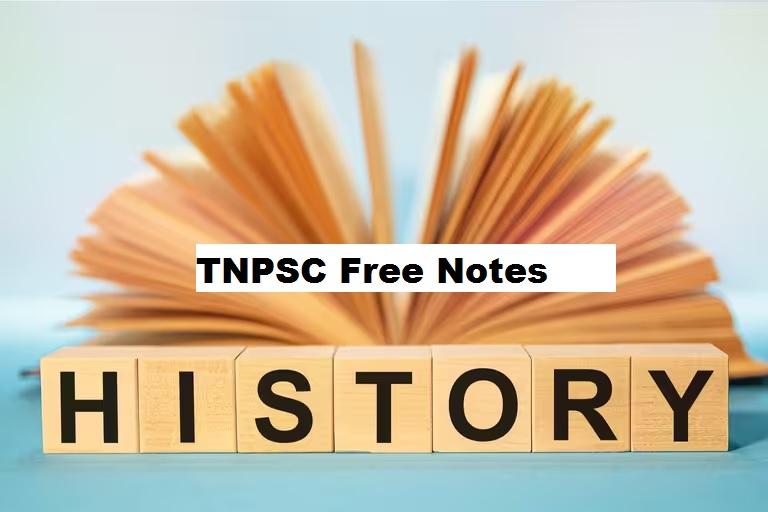இந்தக் கட்டுரையில், TNPSC குரூப் 1, குரூப் 2, குரூப் 2A, குரூப் 4 மாநிலப் போட்டித் தேர்வுகளான TNUSRB, TRB, TET, TNEB போன்றவற்றுக்கான முறைகள் இலவசக் குறிப்புகளைப் பெறுவீர்கள்.தேர்வுக்கு தயாராவோர் இங்குள்ள பாடக்குறிப்புகளை படித்து பயன்பெற வாழ்த்துகிறோம்.
Chola Administration
Status of the King
Historians have debated the nature of the Chola state. Clearly, it was presided over by a
hereditary monarchy.
The king is presented in glowing terms in the literature and inscriptions of the period
venerated the king on par with god.
The kings were invariably addressed as peruman or perumagan (big man),
ulagudaiyaperumal (the lord of the world) and ulagudaiyanayanar (the lord of the
world).
Later, they adopted the titles such as Chakkaravarti (emperor) and Tiribhuvana
Chakkaravarti (emperor of three worlds). At the time of coronation, it was a practice to
add the suffix deva to the name of the crowned kings.
The kings drew legitimacy by claiming that they were a comrade of god (thambiran
thozhar).
Chola rulers appointed Brahmins as spiritual preceptors or rajagurus (the kingdom’s
guide).
Rajaraja I and Rajendra I mention the names of rajagurus and Sarva-sivas in their
inscriptions.
Patronising Brahmins was seen to enhance their prestige and legitimacy.
Chola kings, therefore, granted huge estates of land to Brahmins as brahmadeyams and
chaturvedimangalams (pronounced chatur-vedi-mangalam).
Provinces
At the time of conquest, these areas were under the control of minor chiefs described
by historians as “feudatories”.
They undertook royal tours to increase the efficiency of the administration.
The Chola Empire was divided into mandalams and each mandalam into valanadus and
nadus. In each nadu, there were a number of autonomous villages.
The royal princes or officers were in charge of mandalams. The valanadu was under
periyanattar and nadu under nattar. The town was known as nagaram and it was under
the administration of a council called nagarattar.
There was elaborate administrative machinery comprising various officials called
perundanam and sirudanam.
Rajaraja I integrated these territories and appointed “viceroys” in these regions: Chola-
Pandya in Pandinadu, Chola- Lankeswara in Sri Lanka, which was renamed as Mummudi-
cholamandalam, and Chola-Ganga in the Gangavadi region of southern Karnataka.
In other less prominent regions, the territories of chiefs such as the Irukkuvels,
Ilangovels or Mazhavas or Banas were made part of the Chola state and their chiefs
were inducted into the state system as its functionaries.
Military Administration
Cholas maintained a well-organised army.
The army consisted of three conventional divisions: infantry, cavalry (kudirai sevagar)
and the elephant corps (anaiyatkal). There were also bowmen (villaligal), sword-bearers
(valilar) and spearmen (konduvar).
The Cholas maintained a regular standing army consisting of elephants, cavalry, infantry
and navy.
About seventy regiments were mentioned in the inscriptions.
The royal troops were called Kaikkolaperumpadai. Within this, there was a personal
troop to defend the king known as Velaikkarar.
Attention was given to the training of the army and military cantonments called
kadagams existed.
Military outposts in the conquered territory were called nilaipadai. The captain of a
regiment was known as nayagam and later he assumed the title of padaimudali.
The commander-in-chief was senapati and dandanayagam.
Local Organization
Various locality groups functioned actively in the Chola period. These were bodies such
as Urar, Sabhaiyar, Nagarattar and Nattar.
They were relatively autonomous organisations of the respective groups. They are
considered the building blocks using which the edifice of the Chola state was built.
The urar, who were landholders in the village, acted as spokesmen in the ur. The urar
were entrusted with the upkeep of temples, maintenance of the tanks and managing
the water stored in them.
They also discharged administrative functions of the state such as collection of revenue,
maintenance of law and order, and obeying the king’s orders.
Sabhaiyaar, the brahmadeya was a Brahmin settlement. The Sabha looked after the
affairs of the settlement, including those of the temples at the core of brahmadeya and
its assets.
Like the Ur, the Sabha also functioned as the agents of the state in carrying out
administrative, fiscal, and judicial functions.
Nagaram was a settlement of traders. However, skilled artisans engaged in masonry,
ironsmithing, goldsmithing, weaving and pottery also occupied the settlement. It was
represented by the Nagarattaar, who regulated their association with temples, which
needed their financial assistance.
Nadu was a grouping of several urs, excluding brahmadeyas formed around irrigation
sources such as canals and tanks
Two inscriptions belonging to the period of Parantaka I found at Uttiramerur provide
details of the formation and functions of village councils.
That village was divided into thirty wards and each was to nominate its members to the
village council.
A male, above 35 but below 70, having a share of property and a house of his own, with
knowledge of Vedas and bhasyas was considered eligible.
However, certain norms of disqualification were also mentioned in the inscriptions.
They were:
Those who had been members of the committees for the past three years.
Those who had failed to submit accounts as committee members.
Those who had committed sins.
Those who had stolen the property of others.
From the persons duly nominated, one was to be chosen for each ward by kudavolai
system for a year
The names of eligible persons were written on palm-leaves and put into a pot. A young
boy or girl would take out thirty names each for one ward.
They were divided into six variyams such as samvatsaravariyam, erivariyam, thotta
variyam, pancha variyam, pon variyam and puravuvari variyam to take up six different
functions of the village administration.
The committee members were called variyapperumakkal.
They usually met in the temple or under a tree and passed resolutions. The number of
committees and ward members varied from village to village.
**************************************************************************
| Adda247 TamilNadu Home page | Click here |
| Official Website=Adda247 | Click here |








